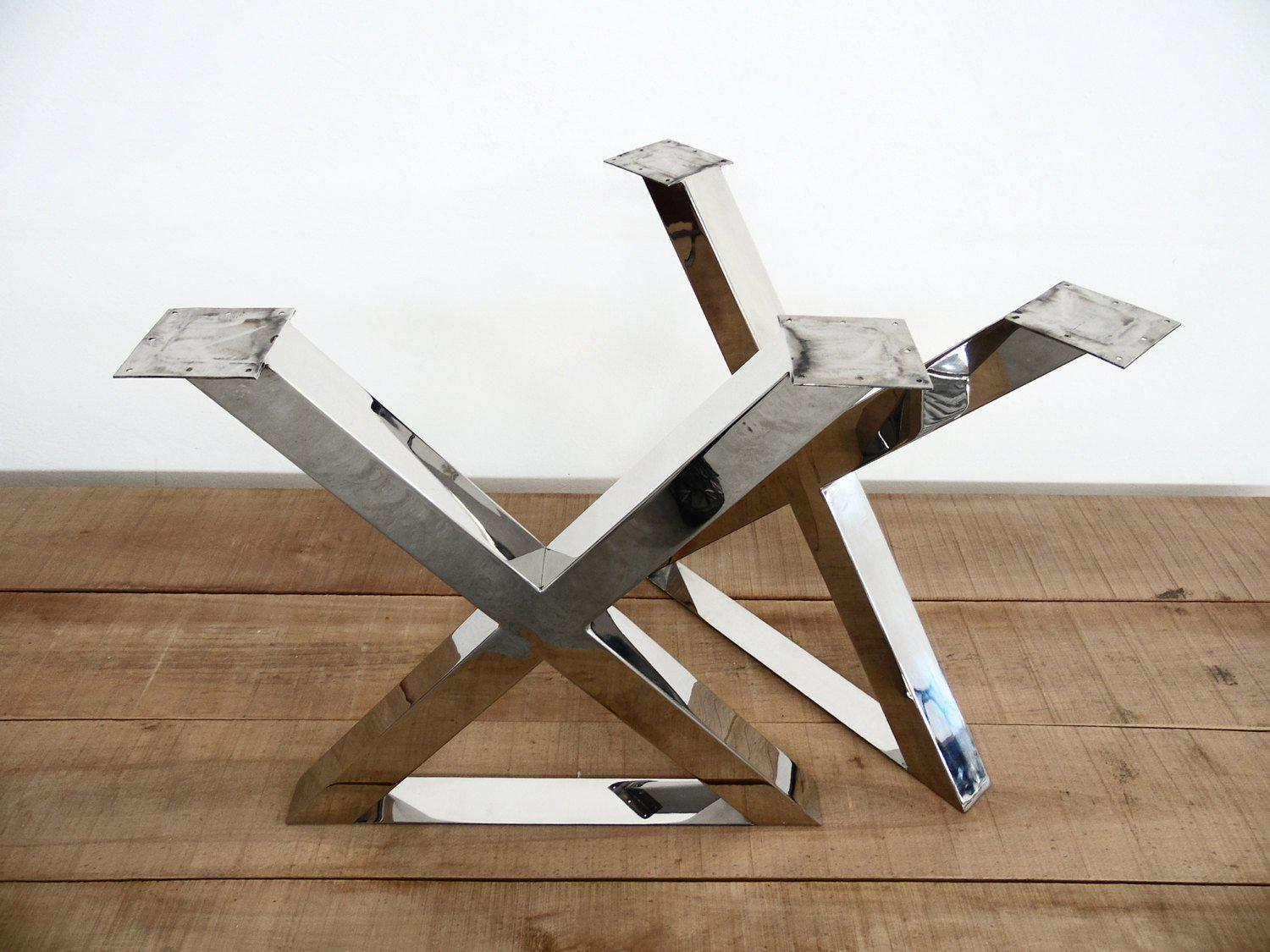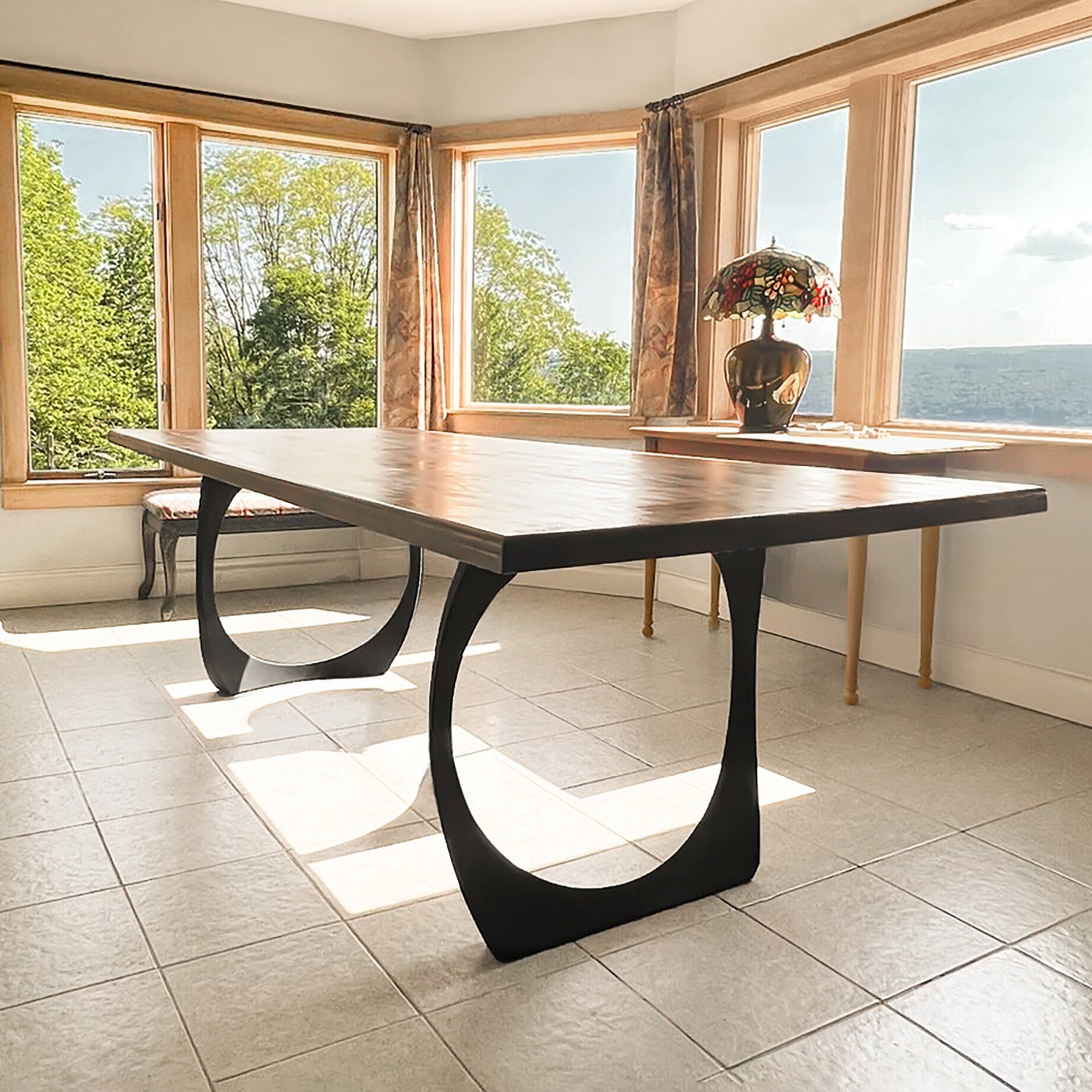Just how to Pick the Perfect Dining Room Table Legs for Your Home Decor
Just how to Pick the Perfect Dining Room Table Legs for Your Home Decor
Blog Article
A Comprehensive Look at Eating Table Leg Styles: Locating the Suitable Match
Selecting the appropriate table leg style is essential for both aesthetic allure and functional performance. Traditional 4 legs use ageless elegance and security, while the pedestal base provides boosted legroom and a contemporary look. For those with bigger tables, trestle legs guarantee sturdy assistance, whereas hairpin legs present a mid-century contemporary ambiance with their minimalist design. The x-shaped legs mix contemporary design with enhanced security. Each of these choices brings one-of-a-kind advantages, making the choice a lot more than just an issue of preference. Discover further to uncover which style flawlessly complements your eating space and way of living.
Standard 4 Legs
Amongst the numerous kinds of eating table leg designs, the standard four-leg style stays an ageless option for numerous homes. Four legs provide well balanced assistance, making sure the table stays steady and capable of birthing significant weight (dining room table legs).
From a visual viewpoint, the standard four-leg style can be easily adjusted to numerous interior styles. Whether crafted from timber, steel, or a combination of products, these legs can be delicately carved, sleek and minimalistic, or anything in between. Their versatility permits them to match both rustic and contemporary setups flawlessly.
Additionally, the simple structure of the four-leg layout assists in ease of activity and positioning within a room. Unlike even more complicated bases, this style lessens obstructions, providing adequate legroom for diners. In recap, the typical four-leg eating table leg style weds withstanding elegance with functional functionality, making it a sharp choice for those looking for both form and feature in their dining furnishings.
Pedestal Base
Usually celebrated for its classy and space-efficient style, the stand base is a prominent choice to the conventional four-leg configuration in dining table leg designs. This distinctive base commonly features a solitary central column sustaining the tabletop, which can vary in type, from ornately carved wood to smooth, modern metal. One of the primary benefits of the pedestal base is its capacity to maximize legroom and seating versatility. Without edge legs, restaurants are managed higher flexibility of motion, making it an optimal option for round and oval tables that promote even more intimate and comprehensive events.
Furthermore, the pedestal base's main support can manage significant weight, permitting the usage of larger table tops, such as marble or thick wood. This toughness paired with its visual convenience makes the pedestal base a preferred selection in both typical and modern indoor setups. It can effortlessly incorporate with different style styles, from traditional beauty to minimalist modernity. The main column itself provides a canvas for detailed designs and artistic expressions, adding a component of aesthetic rate of interest below the table. In summary, the stand base integrates performance snappy, making it a refined and sensible alternative for diverse dining settings.
Trestle Legs
Trestle legs offer a durable and ageless foundation for eating tables, characterized by their straight cross-bracing and sturdy assistance beams. Stemming from medieval times, this layout has advanced yet maintained its vital framework, making it a perennial fave in both standard and contemporary settings. The main trestle beam of light, often sustained by 2 or even more vertical articles, offers exceptional stability, permitting for larger table sizes without the need for extra legs.
A significant benefit of trestle leg tables is the sufficient legroom they supply. Unlike tables with four edge legs, the absence of obstructions at the table's sides provides unobstructed space for chairs and restaurants, boosting comfort and access. This makes trestle tables optimal for suiting larger events, whether in a dining space or a reception hall.
The aesthetic adaptability of trestle legs is significant. Available in a variety of materials such as timber, steel, and composite, they can be ended up to complement a wide variety of indoor designs. From rustic farmhouse to streamlined modern designs, trestle legs can be personalized to fit specific preferences. Their long-lasting appeal and useful benefits make trestle legs an engaging choice for those seeking both design and functionality in their eating table.
Barrette Legs

The charm of barrette legs lies in their simplicity and versatility - dining room table legs. Offered in a series of materials, consisting of steel and brass, they can be ended up in various shades to enhance different interior styles. Whether coupled his comment is here with a rustic wooden tabletop or a contemporary glass surface area, barrette legs effortlessly blend performance with a touch of classic beauty
Sturdiness is an additional notable feature of hairpin legs. In spite of their fragile look, these legs are crafted to birth redirected here considerable weight, making sure the table continues to be stable and safe and secure. In addition, they are relatively easy to install, making them a prominent option for DIY lovers and expert furnishings manufacturers alike.
X-Shaped Legs

Created from materials such as steel, timber, or a combination of both, X-shaped legs can be customized to match various style choices. published here Steel legs typically offer a sleek and commercial feeling, ideal for loft-style apartment or condos and modern-day dining areas. On the various other hand, wooden X-shaped legs provide a warmer, extra rustic appeal, appropriate for farmhouse or diverse insides. The flexibility in products permits property owners to personalize their table to much better fit their overall style plan.
Moreover, the engineering behind X-shaped legs guarantees even weight distribution, decreasing the threat of wobbling and enhancing resilience. This makes them especially fit for bigger eating tables that call for added assistance. In essence, X-shaped legs blend practical engineering with modern looks, making them a classic selection for varied eating environments.
Conclusion
A detailed understanding of dining table leg styles exposes the distinct characteristics and benefits of each layout. Trestle legs guarantee durable assistance for larger tables, and barrette legs introduce a mid-century modern-day visual.
Report this page